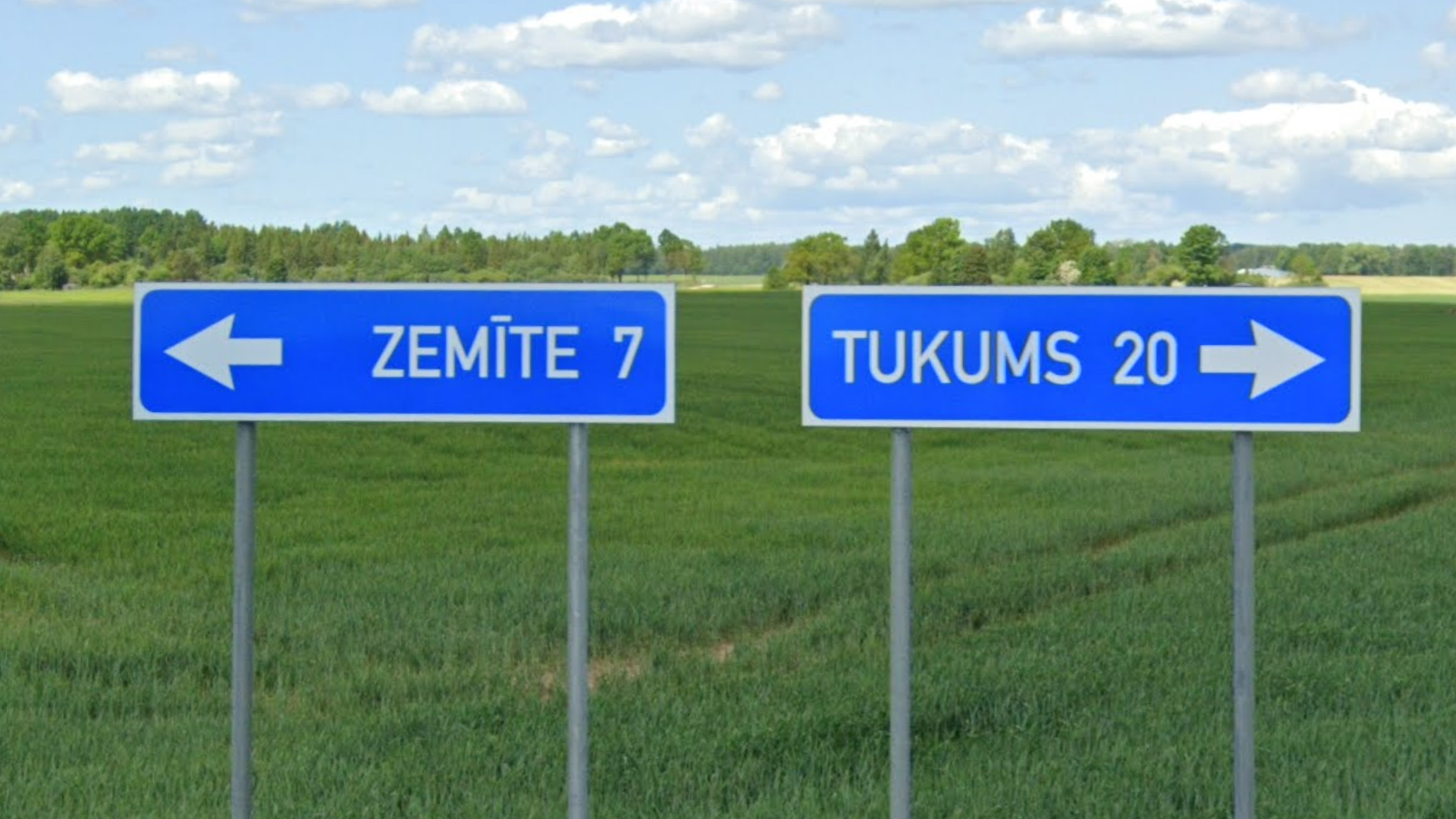
Latvia
Latvian bollards have a thin, slightly curved shape.
They have a rectangular reflector on the front, and two circular reflectors on the back. The reflectors can be white or orange. The black strip is slightly angled. Bollards often have numbers below the front reflector.
NOTE: Estonian and Lithuanian bollards look different.
This infographic shows the main similarities and differences between the bollards of the Baltic and Nordic countries.
All Baltic countries use the same blue kilometre marker. However, they can be distinguished from each other by their angle relative to the road.
In Latvia, the marker will be parallel to the road. It only has a number on one side.
For a quick overview of all three Baltic countries, see this infographic.
Latvia has normal A-type guardrails with white or red reflectors.
NOTE: Estonia has no reflectors. Lithuania has orange reflectors. For a good overview of European guardrails, see this infographic.
Latvian belongs to the Baltic language family. The other major member of this language family is Lithuanian, to which it is closely related.
Within the Baltic languages, the following letters are unique to Latvian:
Vowels with a macron (horizontal stripe): Ā Ē Ī.
Consonants with a small hook: Ģ Ķ Ļ Ņ.
NOTE: Estonian is not a member of the Baltic language family (despite the name), and therefore looks significantly different.
Latvian house numbers are often shaped like tall rectangles and can be found in several colours.
NOTE: This is not common in Estonia or Lithuania.
The historic downtown area of Riga is characterised by majestic art nouveau architecture, that is in places reminiscent of the architecture in Vienna. This is unique within Latvia, and even within the entire Baltics.

















